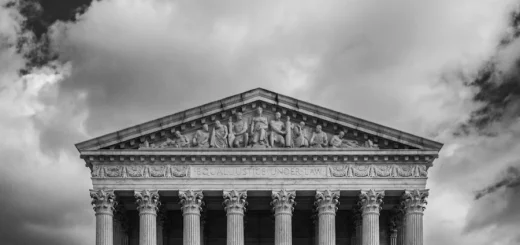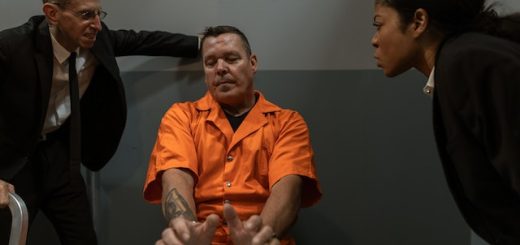Even if Dion Ignores the “Tackling Violent Crime Act” the Courts May Not.
Dramatic is the best way to describe the tenor of Canadian politics over the past few days. Prime Minister Harper’s controversial Speech from the Throne was at once tactical and brazen, deftly capitalizing on the Liberal Party’s internal strife. The speech was calculated to be repugnant to the Liberals. Emboldened by the polls, Mr. Harper defied his opponents to vote it down, a move that would trigger an election, and in so doing play into Prime Minister’s hands. The Liberal response to the speech was equally cunning, and it too was chock full with audacity: Mr. Dion proposed that the speech be amended to include an admission that the failure to meet the Kyoto targets owed to the Harper’s government’s abandonment of the Liberal Party’s “innovative” environmental policy, the brainchild of – you guessed it – Stéphane Dion. Predictably, the amendment was opposed by both the Conservatives as well as the Bloc and NDP, and therefore allowed Mr. Dion to avert an election without losing too much face. While much has been said of the prospect of another federal election, (which would be the third in four years) another foreseeable consequence of the political drama currently unfolding at 24 Sussex is a showdown between Parliament and the Judiciary.
The “Tackling Violent Crime Act”
One of the centrepieces of the omnibus legislation to which Mr. Harper has more or less anchored his minority government is Bill C-2, a squarely conservative piece of “anti-crime” legislation that is actually an amalgam of several bills that failed to escape the legislature in the previous session of Parliament (due of course to a lack of Liberal support). Among other things, Bill C-2, a.k.a the “Tackling Violent Crime Act” (which can be found here), is aimed at “providing for more effective sentencing and monitoring of dangerous and high-risk offenders.” With this objective in mind, the bill proposes the following addition to s. 753 (dealing with “Dangerous and Long Term Offenders”) of the Criminal Code, RSC 1985, c C-46 [Code]:
(1.1) If the court is satisfied that the offence for which the offender is convicted is a primary designated offence for which it would be appropriate to impose a sentence of imprisonment of two years or more and that the offender was convicted previously at least twice of a primary designated offence and was sentenced to at least two years of imprisonment for each of those convictions, the conditions in paragraph (1)(a) or (b), as the case may be, are presumed to have been met unless the contrary is proved on a balance of probabilities.
Put simply, s. 753(1.1) would create a rebuttable presumption that ‘three-peat’ offenders of “designated offences” are violent offenders, and as such subject to a harsher prison term. Furthermore, Bill C-2 would also expand the definition of “designated offences” by adding several crimes to the list of “designated offences” set out in s. 752 of the Code.
The Courts and Reverse Onus Clauses
The courts have been skeptical of reverse onus clauses, especially when they have the potential to effect the liberty interests of an accused person. Such was the case in R v DB (2006), OJ No 1112 (ONCA), an Ontario Court of Appeal decision on which I commented earlier this month (here). In that case, the Ontario Court of Appeal, drawing on a Reference by the Quebec Court of Appeal held that reverse onus provisions of the Youth Criminal Justice Act, SC 2002 c 1 [YCJA], violated s. 7 of the Charter. Like the reverse onus provision in the YCJA, the one described above in Bill C-2 also engages the liberty interests of accused ‘three-peat’ offenders, by placing the burden on them to demonstrate that they should not be classified as violent offenders. The SCC is due to release its judgment in R v DB shortly. Its finding may profoundly effect the constitutional fate of Bill C-2. Regardless of how the SCC rules regarding the reverse onus provisions in the YCJA, it seems that Bill C-2, if passed, is a section 7 Charter challenge waiting to happen.
How Would the Harper Government Respond?
Since Mr. Harper has effectively staked the legitimacy of his government on a ‘tough on crime’ stance, a showdown between the SCC and Parliament over Bill C-2 would likely generate a considerable amount of tension between the two branches of government. In fact, if the Harper government is genuinely serious about “Tackling Violent Crime” (as it appears to be) then there is a distinct possibility that Parliament would invoke the s. 33 override clause of the Charter to save the Act in the event of an SCC ruling declaring it unconstitutional.
At this stage, before Bill C-2 has even become law, any discussion of the use of s. 33 is necessarily speculative. Broadly speaking, political expediency militates against the use of s. 33. Setting aside an SCC judgment cannot be be accomplished without expending a significant amount of political capital. That said, “law and order” legislation is an ideal candidate to be saved by s. 33. Although the completion of the Canadian Charter of Rights and Freedoms heralded a rights revolution in Canada, it also aided the emergence of a a popular backlash to the perceived over-protection of criminals. In this context, the rhetoric of being “tough on crime” developed a broad populist appeal, one which may be sufficient to offset the political cost associated with the use of s. 33.
Whatever the case, the Harper government has emphatically insisted that Liberal support for the Speech From the Throne will be viewed as a willingness to pass the omnibus legislation Mr. Harper alluded to in the speech. “If [the Liberals] are serious about getting tough on crime” explained Justice Minister Rob Nicholson, “they should have no problem expediting this bill through the legislative process in both houses of Parliament.” However, even if the Conservatives manage to stave off the Liberals in Parliament, it is yet to be seen how they will handle a showdown with the Judicial branch.







Join the conversation